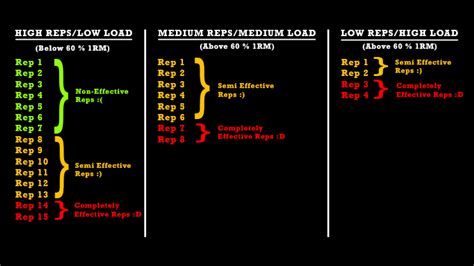How to break through a strength plateau for peak muscle hypertrophy?

Conquering the Strength Plateau: A Guide to Unlocking Hypertrophy
Every dedicated lifter eventually encounters the dreaded strength plateau. That moment when your lifts stall, your progress grinds to a halt, and what once felt like consistent gains seems to vanish. It’s a frustrating, yet common, part of the muscle-building journey. But a plateau isn’t a dead end; it’s an invitation to reassess, adapt, and innovate your training. Breaking through these barriers is crucial not just for lifting heavier, but for stimulating new muscle growth and achieving peak hypertrophy.
Understanding why plateaus occur is the first step. Your body is incredibly adaptive. When subjected to the same stimuli repeatedly, it eventually optimizes its response, making further gains from that specific stimulus difficult. To continue growing, you must provide a new, stronger, or different stimulus.

Revisiting Progressive Overload: The Core Principle
At the heart of all muscle growth is progressive overload – the gradual increase in stress placed on the musculoskeletal system. When you hit a plateau, it often means your current method of progressive overload has become ineffective. This isn’t just about adding weight; it encompasses:
- Increasing Resistance: Lifting heavier weights.
- Increasing Volume: More sets, reps, or exercises.
- Increasing Frequency: Training a muscle group more often.
- Improving Technique: More efficient movement allows for greater load or reps.
- Decreasing Rest Times: Less rest between sets for greater metabolic stress.
- Increasing Time Under Tension: Slower eccentric or concentric phases.
Strategies to Break Through:
1. Vary Your Rep Ranges and Loading
If you’ve been consistently training in the 8-12 rep range for hypertrophy, try shifting your focus. Incorporating periods of lower reps (3-6) with heavier weights can build raw strength, which will then allow you to handle more weight in your hypertrophy ranges. Conversely, higher rep ranges (15-25) with lighter weights can increase muscular endurance and metabolic stress. Periodization, where you cycle through different rep and intensity zones, is an excellent way to keep your body guessing and prevent adaptation.

2. Implement Advanced Intensity Techniques
Once you’ve maximized traditional sets and reps, it’s time to introduce techniques that push beyond failure or extend sets to new limits, increasing time under tension and metabolic stress.
- Drop Sets: Perform a set to failure, immediately reduce the weight by 20-30%, and continue to failure. Repeat 1-2 times.
- Supersets/Giant Sets: Perform two (superset) or more (giant set) exercises back-to-back with no rest in between.
- Rest-Pause Training: Perform a set to failure, rest for 10-20 seconds, perform a few more reps, rest again, and repeat.
- Forced Reps: With a spotter, push beyond failure by having them assist you with 1-2 extra reps.
- Partial Reps: After full range of motion failure, perform partial reps to further fatigue the muscle.
3. Optimize Recovery: Nutrition, Sleep, and Deloads
Training breaks down muscle; recovery builds it back stronger. Often, a plateau isn’t a training issue but a recovery deficit. Ensure you’re consuming enough protein (1.6-2.2g per kg body weight), adequate complex carbohydrates for energy, and healthy fats. Hydration is also critical. Aim for 7-9 hours of quality sleep per night, as this is when most muscle repair and growth occurs.
Don’t underestimate the power of a deload week. Every 6-12 weeks, reduce your training volume and intensity by 40-60% for a week. This allows your central nervous system and muscles to fully recover, often leading to a surge in strength and progress upon returning to heavy training.

4. Refine Form and Address Weak Links
Poor form can limit the amount of weight you can lift and shift tension away from the target muscle. Film yourself, or have a knowledgeable spotter observe your lifts. Identify any weaknesses in your kinetic chain that might be limiting your main lifts. For example, weak triceps can stall your bench press, or a weak core can limit your squats and deadlifts. Incorporate accessory exercises to strengthen these weak points.
5. Adjust Training Frequency and Volume
Are you training a muscle group often enough, or too often? For most natural lifters, hitting a muscle group 2-3 times per week with adequate volume per session is optimal for hypertrophy. If you’re only training a muscle once a week, increasing frequency might provide a new stimulus. Conversely, if you’re overtraining, reducing volume or frequency for a period could allow for better recovery and growth.

The Mental Game and Consistency
Breaking through a plateau also requires a strong mental game. Visualize success, stay consistent with your efforts, and track your progress diligently. Small gains compound over time. It’s not always about monumental leaps but consistent, incremental improvements.

Conclusion
Strength plateaus are an inevitable part of the muscle-building journey, but they are not insurmountable. By strategically varying your training variables, incorporating advanced intensity techniques, prioritizing recovery, refining your form, and maintaining a disciplined mindset, you can effectively break through these barriers. Embrace the challenge, adapt your approach, and watch as you unlock new levels of strength and achieve the peak muscle hypertrophy you’ve been striving for.









